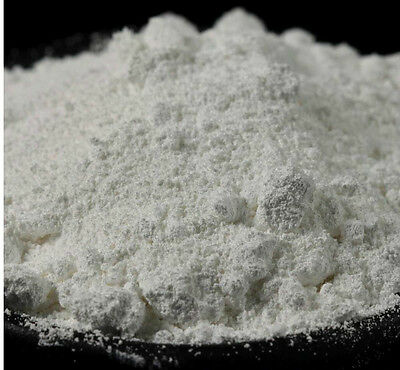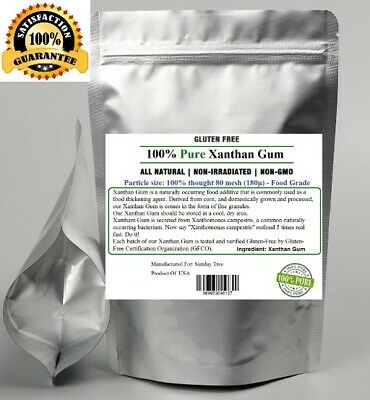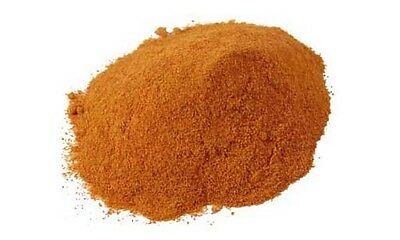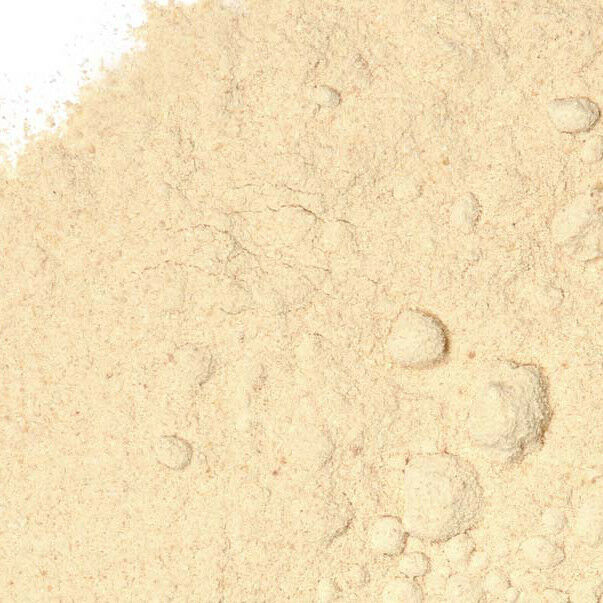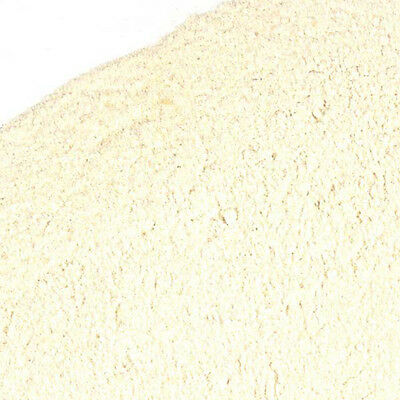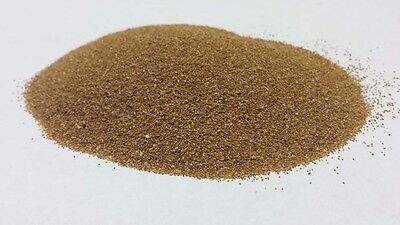-40%
TITANIUM DIOXIDE POWDER 1/2 OZ to 32 OZ
$ 4.21
- Description
- Size Guide
Description
Titanium Dioxide. Please note that as a result of the many varied uses of this product we cannot provide advice as to specific uses and formulations of this or our other products. We specialize in providing minerals and other products which are not generally available in small quantities and we are not ourselves generally users of these products and are therefore not qualified to give advice on usage. We do however, procure all of the products we offer from reputable suppliers and or manufacturers to ensure that the end user is purchasing a quality product. This is a technical grade product with a particle size of greater than 100 nanometers. This product is manufactured to contain no ultrafine particles, however if a user reduces the particle size through milling or some other process so that a significant portion becomes in the ultrafine particle range of less than 100 nanometers, the significance of the reduced particle size should be considered.Uses Please note: This section sourced from Wikepedia. We do not confirm or deny the accuracy of this article and provide it only for general information.
Titanium dioxide
From Wikipedia, the free encyclopedia
Titanium dioxide
Titanium(IV) oxide
The unit cell of rutile
IUPAC name[hide]
Titanium dioxide
Titanium(IV) oxide
Other names[hide]
Titania
Rutile
Anatase
Brookite
Identifiers
CAS number
13463-67-7 Yes
PubChem
26042
ChemSpider
24256 Yes
UNII
15FIX9V2JP Yes
KEGG
C13409
ChEBI
CHEBI:32234 Yes
ChEMBL
CHEMBL1201136
RTECS number
XR2775000
Jmol-3D images
Image 1
SMILES
[show]
InChI
[show]
Properties
Molecular formula
TiO
2
Molar mass
79.866 g/mol
Appearance
White solid
Odor
odorless
Density
4.23 g/cm3 (Rutile)
3.78 g/cm3 (Anatase)
Melting point
1,843 °C (3,349 °F; 2,116 K)
Boiling point
2,972 °C (5,382 °F; 3,245 K)
Solubility in water
insoluble
Refractive index(nD)
2.488 (anatase)
2.583 (brookite)
2.609 (rutile)
Thermochemistry
Std molar
entropy (So298)
50 J·mol−1·K−1[1]
Std enthalpy of
formation (ΔfHo298)
−945 kJ·mol−1[1]
Hazards
MSDS
ICSC 0338
EU classification
Not listed
NFPA 704
NFPA 704 four-colored diamond
010
Flash point
Non-flammable
Related compounds
Other cations
Zirconium dioxide
Hafnium dioxide
Related titaniumoxides
Titanium(II) oxide
Titanium(III) oxide
Titanium(III,IV) oxide
Related compounds
Titanic acid
Except where noted otherwise, data are given for materials in their standard state (at 25 °C (77 °F), 100 kPa)
(verify) (what is: Yes/?)
Infobox references
Titanium dioxide, also known as titanium(IV) oxide or titania, is the naturally occurring oxide of titanium, chemical formula TiO
2. When used as a pigment, it is called titanium white, Pigment White 6 (PW6), or CI 77891. Generally it is sourced from ilmenite, rutile and anatase. It has a wide range of applications, from paint to sunscreen to food colouring. When used as a food colouring, it has E number E171.
Contents [hide]
1 Occurrence
2 Production
2.1 Nanotubes
3 Applications
3.1 Pigment
3.1.1 Sunscreen and UV blocking pigments in the industry
3.2 Photocatalyst
3.3 Electronic data storage medium
3.4 Other applications
4 Health and safety
5 See also
6 References
7 External links
Occurrence[edit]
Titanium dioxide occurs in nature as well-known minerals rutile, anatase and brookite, and additionally as two high pressure forms, a monoclinic baddeleyite-like form and an orthorhombic α-PbO2-like form, both found recently at theRies crater in Bavaria.[2][3] It is mainly sourced from ilmenite ore. This is the most widespread form of titanium dioxide-bearing ore around the world. Rutile is the next most abundant and contains around 98% titanium dioxide in the ore. The metastable anatase and brookite phases convert irreversibly to the equilibrium rutile phase upon heating above temperatures in the range 600°-800 °C.[4]
Titanium dioxide has eight modifications – in addition to rutile, anatase, and brookite, three metastable phases can be produced synthetically (monoclinic, tetragonal and orthorombic), and five high-pressure forms (α-PbO2-like,baddeleyite-like, cotunnite-like, orthorhombic OI, and cubic phases) also exist:
Form
Crystal system
Synthesis
rutile
tetragonal
anatase
tetragonal
brookite
orthorhombic
TiO2(B)[5]
monoclinic
Hydrolysis of K2Ti4O9 followed by heating
TiO2(H), hollandite-like form[6]
tetragonal
Oxidation of the related potassium titanate bronze, K0.25TiO2
TiO2(R), ramsdellite-like form[7]
orthorhombic
Oxidation of the related lithium titanate bronze Li0.5TiO2
TiO2(II)-(α-PbO2-like form)[8]
orthorhombic
baddeleyite-like form, (7 coordinated Ti)[9]
monoclinic
TiO2 -OI[10]
orthorhombic
cubic form[11]
cubic
P > 40 GPa, T > 1600 °C
TiO2 -OII, cotunnite(PbCl2)-like[12]
orthorhombic
P > 40 GPa, T > 700 °C
The cotunnite-type phase was claimed by L. Dubrovinsky and co-authors to be the hardest known oxide with theVickers hardness of 38 GPa and the bulk modulus of 431 GPa (i.e. close to diamond's value of 446 GPa) at atmospheric pressure.[12] However, later studies came to different conclusions with much lower values for both the hardness (7–20 GPa, which makes it softer than common oxides like corundum Al2O3 and rutile TiO2)[13] and bulk modulus (~300 GPa).[14][15]
The oxides are commercially important ores of titanium. The metal can also be mined from other minerals such asilmenite or leucoxene ores, or one of the purest forms, rutile beach sand. Star sapphires and rubies get their asterismfrom rutile impurities present in them.[16]
Titanium dioxide (B) is found as a mineral in magmatic rocks and hydrothermal veins, as well as weathering rims onperovskite. TiO2 also forms lamellae in other minerals.[17]
Spectral lines from titanium oxide are prominent in class M stars, which are cool enough to allow molecules of this chemical to form.
Production[edit]
The production method depends on the feedstock. The most common method for the production of titanium dioxide utilizes the mineral ilmenite. Ilmenite is mixed with sulfuric acid. This reacts to remove the iron oxide group in the ilmenite. The by-product iron(II) sulfate is crystallized and filtered-off to yield only the titanium salt in the digestion solution. This product is called synthetic rutile. This is further processed in a similar way to rutile to give the titanium dioxide product. Synthetic rutile and titanium slags are made especially for titanium dioxide production.[18] The use of ilminite ore usually only produces pigment grade titanium dioxide. Another method for the production of synthetic rutile from ilmenite utilizes the Becher Process.
Rutile is the second most abundant mineral sand. Rutile found in primary rock cannot be extracted hence the deposits containing rutile sand can be mined meaning a reduced availability to the high concentration ore. Crude titanium dioxide (in the form of rutile or synthetic rutile) is purified via converting to titanium tetrachloridein the chloride process. In this process, the crude ore (containing at least 70% TiO2) is reduced with carbon, oxidized with chlorine to give titanium tetrachloride; i.e., carbothermal chlorination. This titanium tetrachloride is distilled, and re-oxidized in a pure oxygen flame or plasma at 1500–2000 K to give pure titanium dioxide while also regenerating chlorine.[19] Aluminium chloride is often added to the process as a rutile promotor; the product is mostly anatase in its absence. The preferred raw material for the chloride process is natural rutile because of its high titanium dioxide content.[20]
One method for the production of titanium dioxide with relevance to nanotechnology is solvothermal Synthesis of titanium dioxide.
Titanium oxide nanotubes, SEMimage.
Nanotubes[edit]
Anatase can be converted by hydrothermal synthesis to delaminated anatase inorganic nanotubes[21] and titanatenanoribbons which are of potential interest as catalytic supports and photocatalysts. In the synthesis, anatase is mixed with 10 M sodium hydroxide and heated at 130 °C for 72 hours. The reaction product is washed with dilute hydrochloric acid and heated at 400 °C for another 15 hours. The yield of nanotubes is quantitative and the tubes have an outer diameter of 10 to 20 nm and an inner diameter of 5 to 8 nm and have a length of 1 μm. A higher reaction temperature (170 °C) and less reaction volume gives the corresponding nanowires.[22]
Another process for synthesizing TiO
2 nanotubes is through anodization in an electrolytic solution. When anodized in a 0.5 weight percent HF solution for 20 minutes, well-aligned titanium oxide nanotube arrays can be fabricated with an average tube diameter of 60 nm and length of 250 nm. Based on X-ray Diffraction, nanotubes grown through anodization are amorphous.[23]
Applications[edit]
The most important application areas are paints and varnishes as well as paper and plastics, which account for about 80% of the world's titanium dioxide consumption. Other pigment applications such as printing inks, fibers, rubber, cosmetic products and foodstuffs account for another 8%. The rest is used in other applications, for instance the production of technical pure titanium, glass and glass ceramics, electrical ceramics, catalysts, electric conductors and chemical intermediates.[24] It also is in most red-coloured candy.
Pigment[edit]
Titanium dioxide is the most widely used white pigment because of its brightness and very high refractive index, in which it is surpassed only by a few othermaterials. Approximately 4.6 million tons of pigmentary TiO2 are used annually worldwide, and this number is expected to increase as utilization continues to rise.[25]When deposited as a thin film, its refractive index and colour make it an excellent reflective optical coating for dielectric mirrors and some gemstones like "mystic firetopaz". TiO2 is also an effective opacifier in powder form, where it is employed as a pigment to provide whiteness and opacity to products such as paints, coatings,plastics, papers, inks, foods, medicines (i.e. pills and tablets) as well as most toothpastes. In paint, it is often referred to offhandedly as "the perfect white", "the whitest white", or other similar terms. Opacity is improved by optimal sizing of the titanium dioxide particles. Some grades of titanium based pigments as used in sparkly paints, plastics, finishes and pearlescent cosmetics are man-made pigments whose particles have two or more layers of various oxides – often titanium dioxide, iron oxide or alumina – in order to have glittering, iridescent and or pearlescent effects similar to crushed mica or guanine-based products. In addition to these effects a limited colour change is possible in certain formulations depending on how and at which angle the finished product is illuminated and the thickness of the oxide layer in the pigment particle; one or more colours appear by reflection while the other tones appear due to interference of the transparent titanium dioxide layers.[26] In some products, the layer of titanium dioxide is grown in conjunction with iron oxide by calcination of titanium salts (sulfates, chlorates) around 800 °C[27]or other industrial deposition methods such as chemical vapour deposition on substrates such as mica platelets or even silicon dioxide crystal platelets of no more than 50 µm in diameter.[28] The iridescent effect in these titanium oxide particles (which are only partly natural) is unlike the opaque effect obtained with usual ground titanium oxide pigment obtained by mining, in which case only a certain diameter of the particle is considered and the effect is due only to scattering.
In ceramic glazes titanium dioxide acts as an opacifier and seeds crystal formation.
Titanium dioxide has been shown statistically to increase skimmed milk's whiteness, increasing skimmed milk's sensory acceptance score.[29]
Titanium dioxide is used to mark the white lines of some tennis courts.[30]
The exterior of the Saturn V rocket was painted with titanium dioxide; this later allowed astronomers to determine that J002E3 was the S-IVB stage from Apollo 12and not an asteroid.
Sunscreen and UV blocking pigments in the industry[edit]
In cosmetic and skin care products, titanium dioxide is used as a pigment, sunscreen and a thickener. It is also used as a tattoo pigment and in styptic pencils. Titanium dioxide is produced in varying particle sizes, oil and water dispersible, and in certain grades for the cosmetic industry.
Titanium dioxide is found in the majority of physical sunscreens because of its high refractive index, its strong UV light absorbing capabilities and its resistance to discolouration under ultraviolet light. This advantage enhances its stability and ability to protect the skin from ultraviolet light. Nano-scaled titanium dioxide particles are primarily used in sun screen lotion because they scatter visible light less than titanium dioxide pigments while still providing UV protection.[25] Sunscreens designed for infants or people with sensitive skin are often based on titanium dioxide and/or zinc oxide, as these mineral UV blockers are believed to cause less skin irritation than other UV absorbing chemicals.
This pigment is used extensively in plastics and other applications not only as a white pigment or an opacifier but also for its UV resistant properties where the powder disperses the light – unlike organic UV absorbers – and reduces UV damage, due mostly to the extremely high refractive index of the particles.[31] Certain polymers used in coatings for concrete[32] or those used to impregnate concrete as a reinforcement are sometimes charged with titanium white pigment for UV shielding in the construction industry, but it only delays the oxidative photodegradation of the polymer in question, which is said to "chalk" as it flakes off due to lowered impact strength and may crumble after years of exposure in direct sunlight if UV stabilizers have not been included .
Photocatalyst[edit]
TiO2 fibers and spirals.
Titanium dioxide, particularly in the anatase form, is a photocatalyst under ultraviolet (UV) light. It has been reported that titanium dioxide, when doped with nitrogen ions or doped with metal oxide like tungsten trioxide, is also a photocatalyst under either visible or UV light.[33] The strong oxidative potential of the positive holes oxidizes water to create hydroxyl radicals. It can also oxidize oxygen or organic materials directly. Hence, in addition to its use as a pigment, titanium dioxide can be added to paints, cements, windows, tiles, or other products for its sterilizing, deodorizing and anti-fouling properties and is used as a hydrolysis catalyst. It is also used in dye-sensitized solar cells, which are a type of chemical solar cell (also known as a Graetzel cell).
The photocatalytic properties of titanium dioxide were discovered by Akira Fujishima in 1967[34] and published in 1972.[35]The process on the surface of the titanium dioxide was called the Honda-Fujishima effect (ja:本多-藤嶋効果).[34] Titanium dioxide, in thin film and nanoparticle form has potential for use in energy production: as a photocatalyst, it can carry outhydrolysis; i.e., break water into hydrogen and oxygen. With the hydrogen collected, it could be used as a fuel. The efficiency of this process can be greatly improved by doping the oxide with carbon.[36] Further efficiency and durability has been obtained by introducing disorder to the lattice structure of the surface layer of titanium dioxide nanocrystals, permitting infrared absorption.[37]
In 1995 Fujishima and his group discovered the superhydrophilicity phenomenon for titanium dioxide coated glass exposed to sun light.[34] This resulted in the development of self-cleaning glass and anti-fogging coatings.
TiO2 incorporated into outdoor building materials, such as paving stones in noxer blocks[38] or paints, can substantially reduce concentrations of airborne pollutants such as volatile organic compounds and nitrogen oxides.[39]
A photocatalytic cement that uses titanium dioxide as a primary component, produced by Italcementi Group, was included in Time's Top 50 Inventions of 2008.[40]
Attempts have been made to photocatalytically mineralize pollutants (to convert into CO2 and H2O) in waste water.[41] TiO2 offers great potential as an industrial technology for detoxification or remediation of wastewater due to several factors:[42]
The process uses natural oxygen and sunlight and thus occurs under ambient conditions; it is wavelength selective and is accelerated by UV light.
The photocatalyst is inexpensive, readily available, non-toxic, chemically and mechanically stable, and has a high turnover.
The formation of photocyclized intermediate products, unlike direct photolysis techniques, is avoided.
Oxidation of the substrates to CO2 is complete.
TiO2 can be supported as thin films on suitable reactor substrates, which can be readily separated from treated water.[43]
Electronic data storage medium[edit]
In 2010, researchers at the University of Tokyo, Japan have created a crystal form of titanium oxide with particles 5 to 20 nanometers that can be switched between two states with light. Use of the 5 nm particles could theoretically lead to a 25 TB storage disc.[44]
Other applications[edit]
Synthetic single crystals of TiO2, ca. 2–3 mm in size, cut from a larger plate.
Titanium dioxide in solution or suspension can be used to cleave protein that contains the amino acid proline at the site where proline is present.[45]
Titanium dioxide is also used as a material in the memristor, a new electronic circuit element. It can be employed for solar energy conversion based on dye, polymer, or quantum dot sensitized nanocrystalline TiO2 solar cells usingconjugated polymers as solid electrolytes.[46]
Synthetic single crystals and films of TiO2 are used as a semiconductor,[47] and also in Bragg-stack style dielectric mirrorsdue to the high refractive index of TiO2 (2.5–2.9).[48][49]
Health and safety[edit]
Ambox scales.svg
This article has been nominated to be checked for its neutrality. Discussion of this nomination can be found on the talk page. (March 2011)
Titanium dioxide is incompatible with strong reducing agents and strong acids.[50] Violent or incandescent reactions occur with molten metals that are veryelectropositive, e.g. aluminium, calcium, magnesium, potassium, sodium, zinc and lithium.[51]
Titanium dioxide accounts for 70% of the total production volume of pigments worldwide.[citation needed] It is widely used to provide whiteness and opacity to products such as paints, plastics, papers, inks, foods, and toothpastes. It is also used in cosmetic and skin care products, and it is present in almost every sunblock, where it helps protect the skin from ultraviolet light.
Many sunscreens use nanoparticle titanium dioxide (along with nanoparticle zinc oxide) which, despite reports of potential health risks,[52] is not actually absorbed through the skin.[53] Other effects of titanium dioxide nanoparticles on human health are not well understood.[54] Nevertheless, allergy to topical application has been confirmed.[55]
Titanium dioxide dust, when inhaled, has been classified by the International Agency for Research on Cancer (IARC) as an IARC Group 2B carcinogen, meaning it is possibly carcinogenic to humans.[56] The findings of the IARC are based on the discovery that high concentrations of pigment-grade (powdered) and ultrafine titanium dioxide dust caused respiratory tract cancer in rats exposed by inhalation and intratracheal instillation.[57] The series of biological events or steps that produce the rat lung cancers (e.g. particle deposition, impaired lung clearance, cell injury, fibrosis, mutations and ultimately cancer) have also been seen in people working in dusty environments. Therefore, the observations of cancer in animals were considered, by IARC, as relevant to people doing jobs with exposures to titanium dioxide dust. For example, titanium dioxide production workers may be exposed to high dust concentrations during packing, milling, site cleaning and maintenance, if there are insufficient dust control measures in place. However, the human studies conducted so far do not suggest an association between occupational exposure to titanium dioxide and an increased risk for cancer. The safety of the use of nano-particle sized titanium dioxide, which can penetrate the body and reach internal organs, has been criticized.[58] Studies have also found that titanium dioxide nanoparticles cause inflammatory response and genetic damage in mice.[59][60] The mechanism by which TiO
2 may cause cancer is unclear. Molecular research suggests that cell cytotoxicity due to TiO
2 results from the interaction between TiO
2 nanoparticles and the lysosomal compartment, independently of the known apoptotic signalling pathways.[61]
The body of research regarding the carcinogenicity of different particle sizes of titanium dioxide has led the US National Institute for Occupational Safety and Healthto recommend two separate exposure limits. NIOSH recommends that fine TiO
2 particles be set at an exposure limit of 2.4 mg/m3, while ultrafine TiO
2 be set at an exposure limit of 0.3 mg/m3, as time-weighted average concentrations up to 10 hours a day for a 40 hour work week.[62] These recommendations reflect the findings in the research literature that show smaller titanium dioxide particles are more likely to pose carcinogenic risk than the larger titanium dioxide particles.
There is some evidence the rare disease yellow nail syndrome may be caused by titanium, either implanted for medical reasons or through eating various foods containing titanium dioxide.[63]
Note on Shipping and Handling, Packaging Returns and Cancellations.
All items shipped in zip locked bags, double bagged to insure containment. Bags may be marked simply with contents by a permanent marker but may not contain other labeling. Items are generally handled within one business day and shipped within one business day, however will in no case be shipped later then two business days after handling. Items less than 16 oz. are generally most economically shipped USPS First Class and Items 16 Oz. and greater are shipped USPS Priority Mail and therefor arrive soonest. Certain items may be shipped via FedEx ground or UPS ground and transit time will vary. In all cases prices reflect the most economical way to ship an item. Those wishing to expedite shipping must contact seller. eBay estimated shipping times are based on average shipping times and are note a due date. Items shipped First Class will spend more time in transit. Items shipped over a USPS Holiday will be delayed at least one day.
Please note that once you place an order a seller incurs eBay fees and may incur shipping charges. Accordingly, this order must be paid for prior to processing a cancellation or return. Although we are not required to process a cancellation or return we understand that mistakes can occur and as a courtesy may work with buyers within the policy of eBay and this listing. A special note to international buyers is to carefully review USPS published international shipping costs for the weight of the item the purchase prior to placing an order. USPS publishes such costs online which are subject to change. Once an order is placed the buyer is responsible for these costs. Please note that once an order is placed a cancellation or return is processed as a courtesy at the discretion of the seller and is not required. Accordingly, we ask buyers to provide an honest and detailed explanation of why the wish to cancel or return an item. Demanding a return or cancellation or asking a seller to accommodate a cancellation or return without a reasonable explanation is not a sufficient reason. Buyers are reminded eBay sales are final that all returns and cancellations are considered at the discretion and courtesy of the seller and not required to be processed. Accordingly, negative feedback about shipping time for items shipped on time as identified in this listing and shipping costs and negative feedback related to cancellations or returns processed in accord with eBay policy and details and policies identified in this listing may be removed by eBay.
International Shipping Costs and Methods to Most Countries as of 12/3/2014:
2 oz or less
.55
USPS First Class International
4
oz
.45
USPS First Class International
6 oz
.75
USPS First Class International
8 oz
.75
USPS First Class International
12 oz
.90
USPS First Class International
16 oz
.75
USPS First Class International
1.5 lbs.
.45
USPS First Class International
2 lbs
.75
USPS Priority Mail International
Please note these prices are subject to change by USPS and once an order is placed, the buyer is responsible for the actual cost of USPS shipping at the time the order is placed. The most current prices can be calculated on the USPS International Price Calculator found on the USPS public website.
